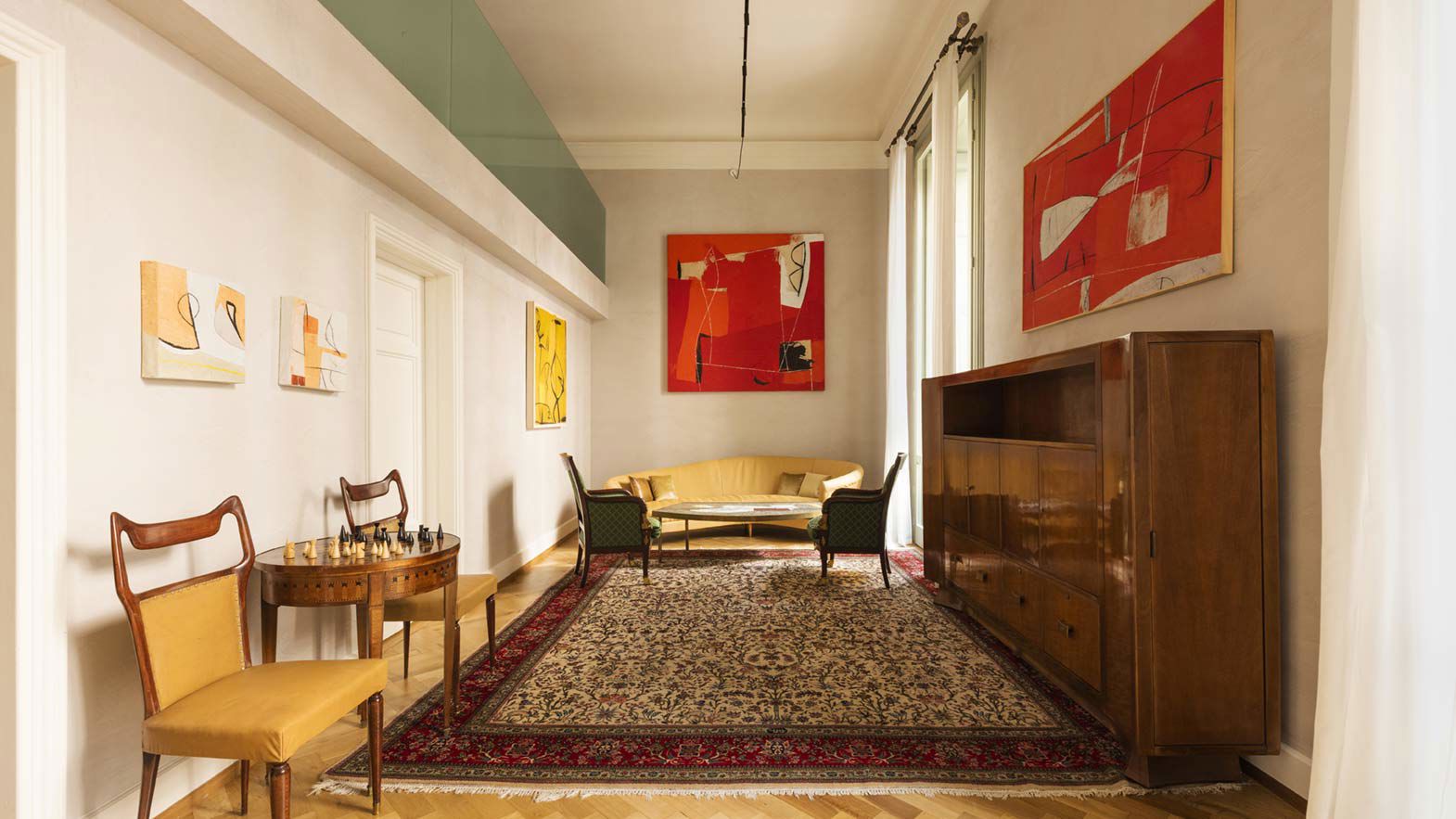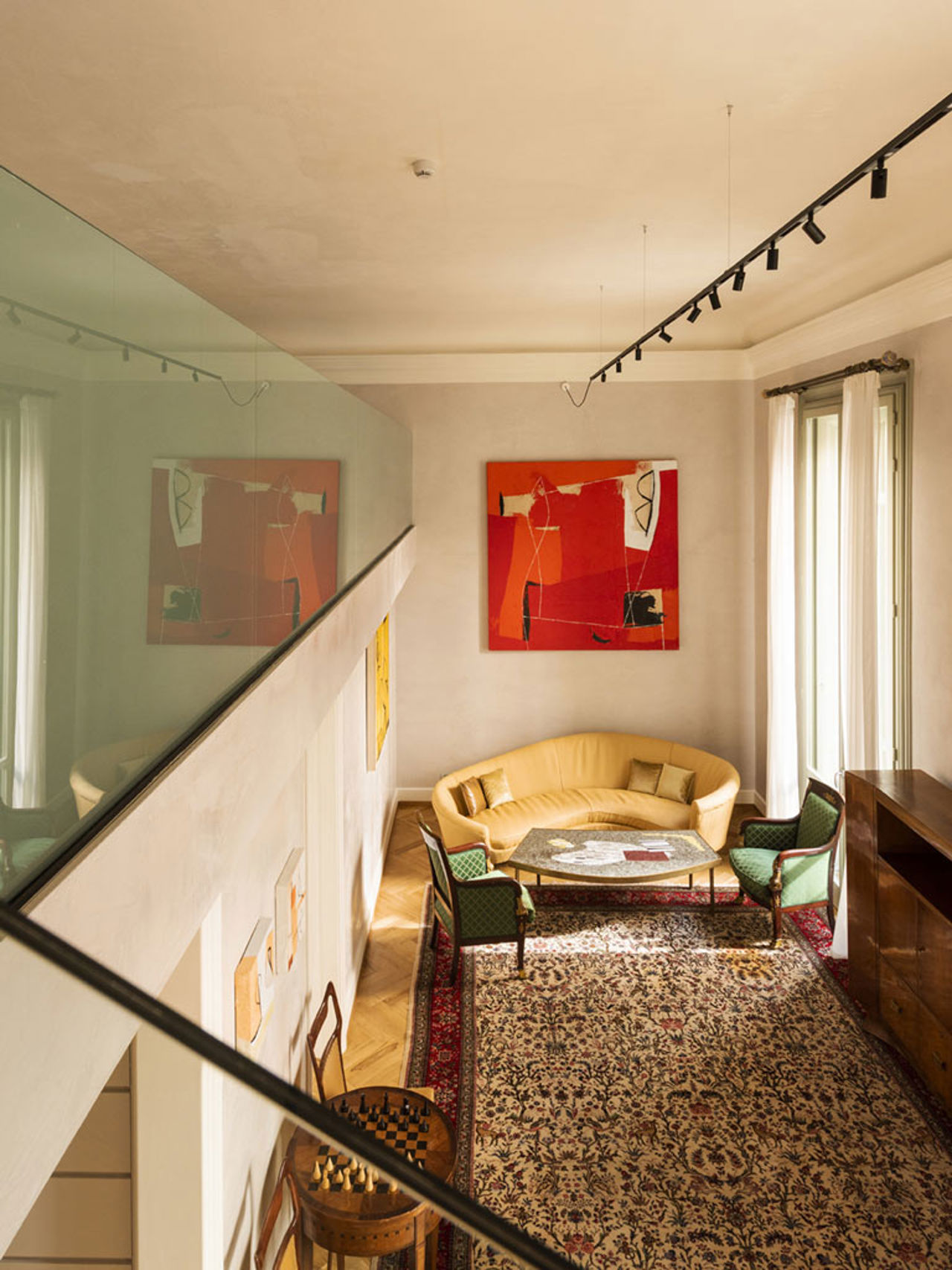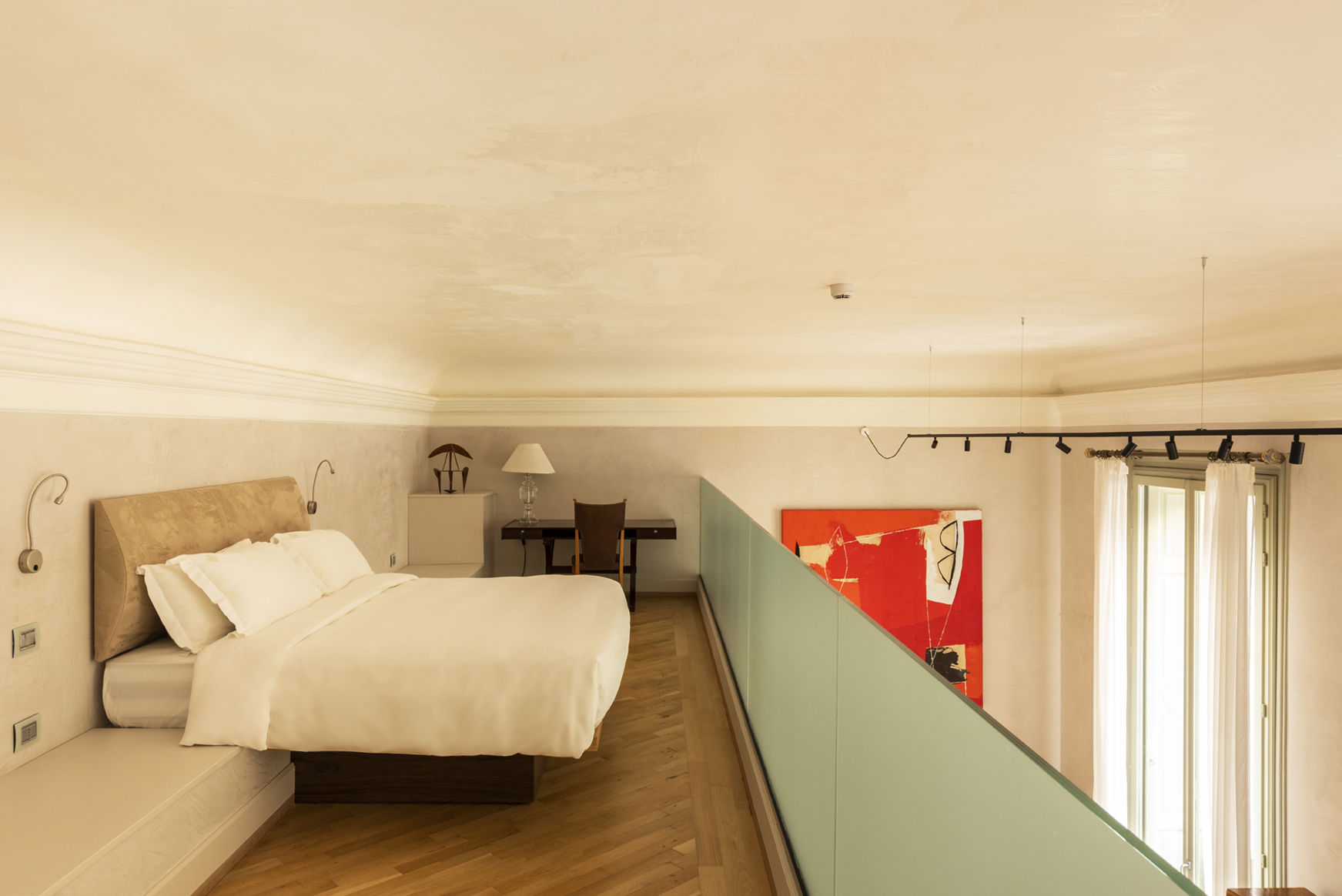Tommaso Cascella uses the most archaic means that man is able to use: paper, wood, iron, earth and natural pigments. Through an elegant blending of materials and colours, his painting tends to express a three - dimensional relief as a voice with his bronze sculptures. Charged with universal meanings, the intense chromatic compositions of Cascella represent architectural layouts that are balanced through the symbolic signs of an alchemic alphabet. His work is extraor dinarily dense and profound, from the richness and complexity of the reading plans of his work and the continuous references to the history of the avant - gardes, to ancient and primitive art, to literature and poetry, and even anthropology and philosophy. Its strength is to have created a highly expressive and absolutely original language, made up of immediate signs and the use of simple materials. His paintings are often monochromatic, rich in essential primitive signs, which cross the surface, to which are added elements jutting out in wood and iron that form a sort of visual framework for the painting.
Tommaso Cascella
Artist


Cascella tirelessly plays with strange signs of an imaginary alphabet, creating symbols with mysterious meanings, slipping between different materials and with different techniques and with great freedom and expressive strength.
His abstract signs, significant in their primitive elementary nature, are at the same time the sign of the rejection of our current language and the creation of another language, at once poetic and symbolic, archaic, imaginative and mysterious.
Tommaso Cascella was born in Rome in 1951, he lives in Rome and Bomarzo, near Viterbo. Painting and sculpture are natural languages for him, due to his familiar artistic background. Since 1984 Tommaso Cascella has participated in more than 200 group and solo exhibitions all over the world. Among other places, he has participated in the Venice Biennial and the Rome Quadrennial. Since 1995 he has been named "Academic for sculpture" at the San Luca Academy. His works are installed in squares and public places, such as the Tachikawa City district of Tokyo, in important public museums such as the National Museum of Slovenia in Ljubljana, the MACRO in Rome, the Pinacoteca of the Council of State in Rome, the Wuhan Art Museum, in China. His exhibitions have been hosted in public spaces, museums and galleries all over the world, in Switzerland, Germany, Slovakia, Japan, China and Taiwan, as well as in numerous museums and public institutions in Italy.


